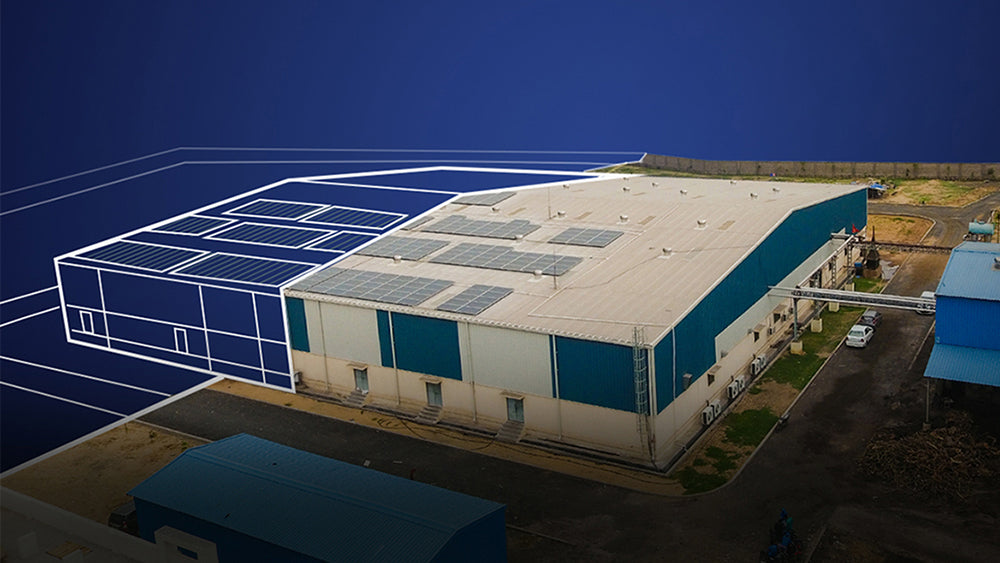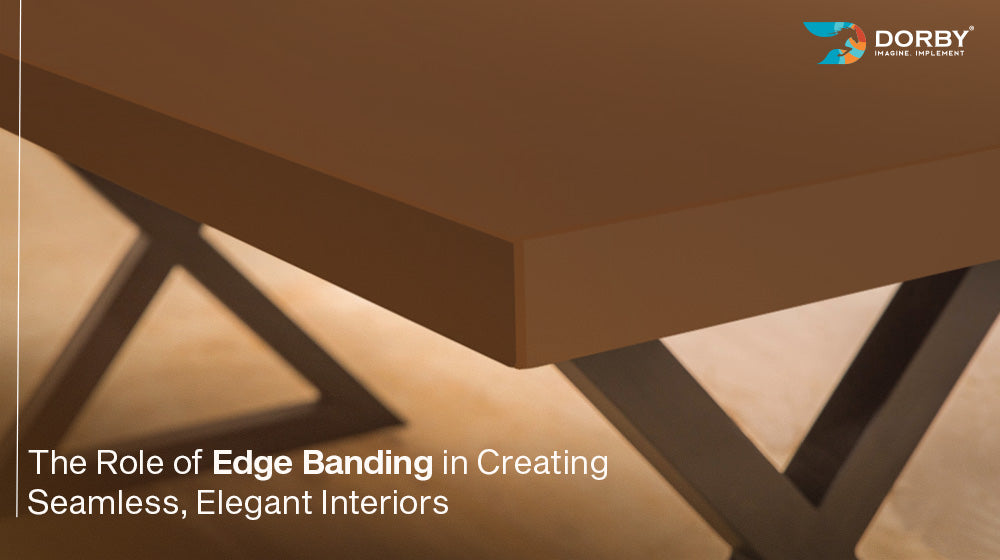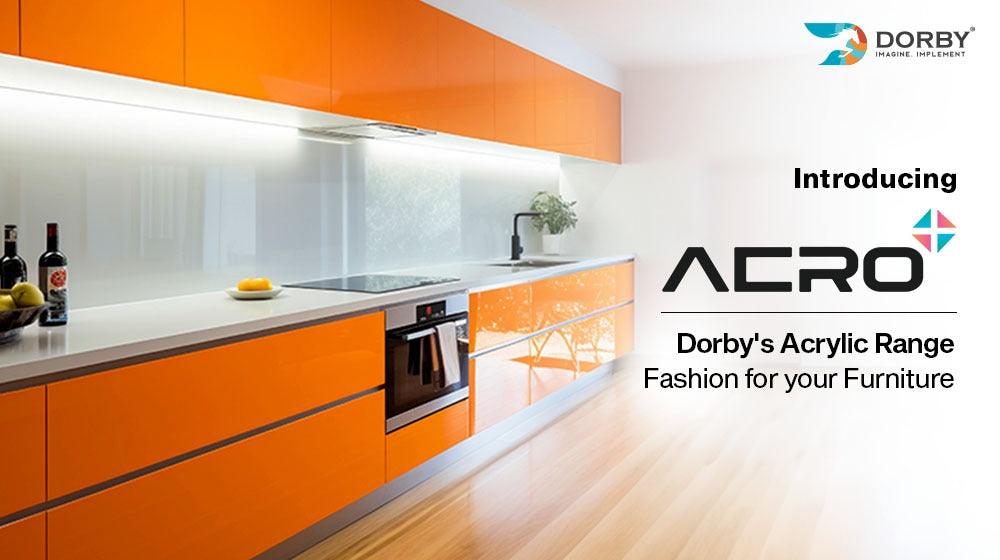If you choose furniture for your space, you will eventually have to decide what you want, and edge banding will be part of the decision. Now, you must be wondering what edge banding is, right?
Edge banding tapes used to cover exposed surfaces plywood, laminates, and other manufactured wood. These narrow edge bands or strips are called edging tape. At Dorby, they are available in thicknesses of 0.8mm, 1.3mm, and 2.0mm.
Dorby’s edge bands are 100% recyclable, durable, antifungal, and antibacterial.
Why is Edge Banding Important?
Edge banding has both functional and aesthetic reasons. In terms of visuals, these edge bands convert the rough edges of plywood into something pleasing to look at. This boosts the furniture’s overall design, which can easily capture anyone’s attention.
In terms of functionality, edge banding keeps away moisture which serves as a seal of sorts on the core material’s edge. Also, edge banding enhances durability by providing resistance to impacts. Solid edge bands can increase the overall strength of your furniture.
Types of Edge Banding Materials
PVC (Polyvinyl Chloride)
This is the most commonly used edge banding material. PVC edge banding is frequently used in the production of edge bands for furniture, particularly for modular ones.
It is because they are robust, easy to clean, and are highly durable. Another perk of PVC edge bands is that they offer a soft-looking finish.
Dorby’s laminate edge banding uses PVC and is compatible with plywood as well as non-wood edges.
Wood Veneer
A veneer edge banding tape is a thin layer made of real wood veneers like walnut, maple, or cherry. Veneer means ‘thin pieces of wood’ and they enjoy preference because they are attractive, are strong, and are durable.
This edge band has a clean solid-wood appearance and thanks to being pre-sanded, it can easily absorb stains.
ABS
This is a high-quality thermoplastic that can withstand regular knocks and scratches, water, heat, and household cleaning agents, making it popular for high-traffic furniture. One example can be kitchens.
As an ABS edge band can resist heat, it may be used on kitchen cabinets that are close to ovens or stoves without causing any damage.
How is Edge Banding Applied?
There are different methods of applying edge banding, and some of the application mediums are hot-melt glue and iron-on edge banding.
Hot-Melt Glue
The hot-melt glue is heated to the right temperature so that it melts properly. This makes sure that it melts and flows in the way required. The glue is then added to the wood panel or the edge banding strip.
Iron-On
Iron-on banding is an easily applied tape that can be applied to the exposed edge of materials ranging from MDF to chipboard. The glue is already added at the back of the edging. The melting of this glue leads to a very strong bond between the tape and whatever it is applied to.
What is the Thickness of Edge Bands?
Edge bands come in different sizes catering to various applications. A thin edge usually has a thickness of 1mm and is usually used in decorative panels and superior-quality furniture work.
A thickness of 1mm to 2mm is used if the project involves designing furniture having smart designs and durability.
At Dorby, we offer edge bands starting from 0.8mm to to 2mm.
How to Choose the Right Edge Banding Tape?
There are several factors to keep in mind when choosing the ideal edge banding for your project. Here are some important things to consider before making the decision.
Compatibility
Ensure that the edge band you choose complements the material you will be working with. The materials like PVC, wood veneer, and ABS have their characteristics in terms of durability, appearance, flexibility, and others.
Thickness
Edge bands come in different thicknesses. The decision of choosing the correct edge bands depends on the panel’s or board’s thickness. Both have to match to get the best output.
Durability and Maintenance
This is another important factor. Think about what the edge band has to be resistant to, like water, heat, and so on. Another factor is how easy for you to clean the edge band yourself.
Maintenance and Longevity
Edge bands are not difficult to maintain, especially Dorby’s. Cleaning them regularly can prevent the accumulation of water on the edges, enhancing their lifespan.
PVC and ABS edge bands can withstand water which keeps the edge bands from peeling away or deteriorating over time, even when there is high humidity. After you have cleaned the edges, dry them immediately to prevent water damage.
Conclusion
Edge banding is more than just a finishing touch — it’s essential for creating durable, elegant, and seamless interiors. Whether you choose PVC, wood veneer, or ABS, the right edge banding enhances the aesthetics and longevity of your furniture while protecting it from moisture, heat, and impact.
With a variety of thicknesses and application methods available, Dorby’s perfect laminate edge banding ensures your furniture remains stylish and strong for years to come. So, when it comes to designing interiors that stand out, don’t overlook the power of quality edge bands.






